By Lawrence Haywood, Mar 1, 2025
Vietnam makes no secret of its love of food, and Hue makes no secret of its role in Vietnam’s culinary development. Food guides in Hue will tell you, lovingly and repeatedly, that about two-thirds of the nation’s dishes can have their origins traced back to Hue, and even more specifically, to the rulers of Vietnam’s dynasties - the kings and lords who dreamt up the most lavish cuisine to satisfy their regal appetites.
The wealth and resources they were able to put into exploring different ingredient combinations was the catalyst for a full-scale food revolution in Hue and then Vietnam, where a new philosophy and approach to food accompanied new dishes that eventually made their way to the furthest corners of the country.
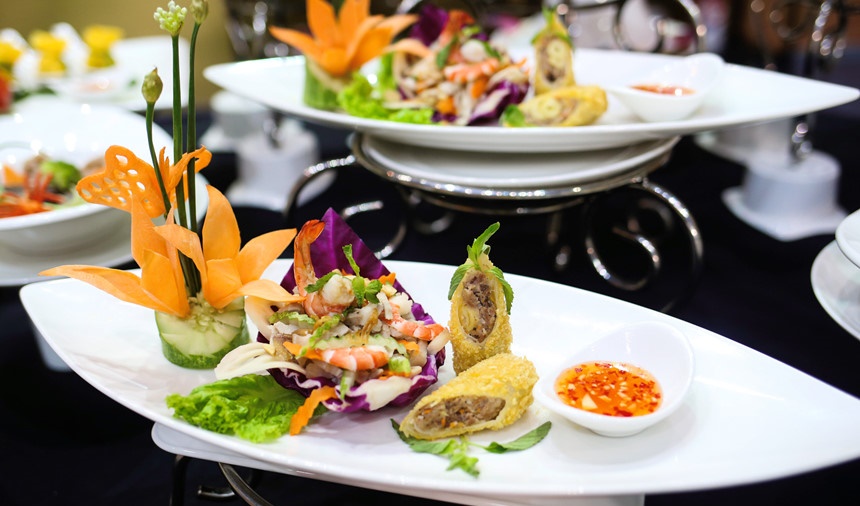
Lotus root salad with shrimp and meat
Visitors to the central region of Vietnam are constantly plagued by the question of what to eat in Hue. The hugely popular tourist destination has a hugely popular menu with locals, but a lot of tourists tend to stick to the more reliable meals of pho and banh mi. The food in Hue has been tried and tested since the time of feudal lords, and there is a whole world of culinary excellence open to visitors who want to explore and experiment, just as the kings of Hue did. This is Incredible Asia Journeys’ advice on what to eat in Hue.
There’s no other place to start than the eponymous bun bo hue, the symbol, and spearhead of Hue best food colonization of the entire country. The fire-red appearance of some of the broths suggests a spicy dish, but bun bo hue is fairly mild in the spice department (until you add your third spoonful of accompanying garlic chili sauce).
It is a meaty concoction, with sausages, meatballs, beef brisket, congealed pig’s blood, and an entire pig’s foot all getting to know each other in the flavorsome soup. What to eat with Bun Bo Hue? Like all dishes coming out of Hue in ancient times, the appearance had to be perfect, so the color was added via lettuce, bean sprouts, banana blossom, spring onions, and the brilliant white of the bun noodles; thick and slippery in texture and delicious in taste.
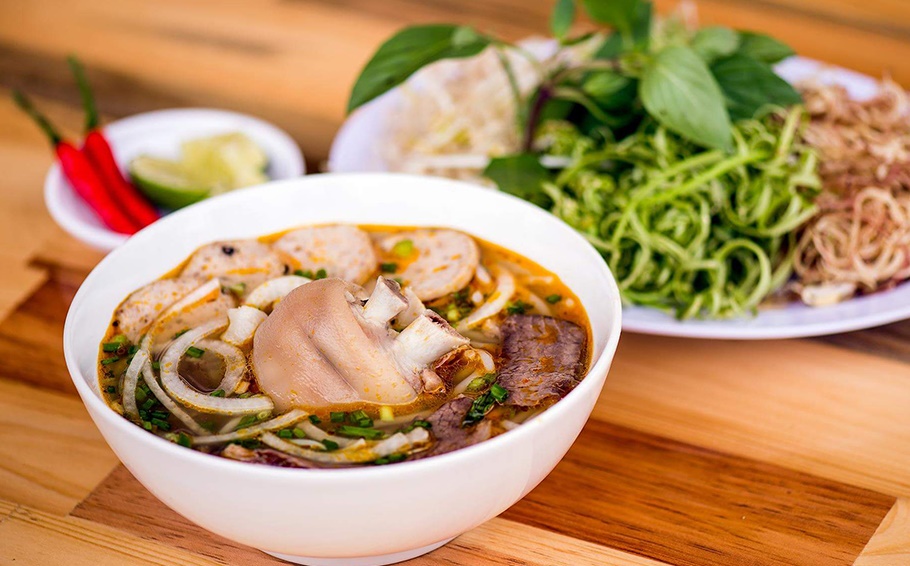
A Bowl of Bun Bo Hue
You’ll find many foreigners roaming the streets of Hue wondering what to eat, before settling on the regional classic about 8 times out of 10. Anthony Bourdain did exactly this in his popular TV Show Parts Unknown when he went to a small food stand in Dong Ba Market (2 Tran Hung Dao) to try the city’s specialty. The exact stall is very hard to find, but if you look out for the picture of Anthony Bourdain’s face hanging high above a glass case of ingredients, you’ve found the right place.
The presence of many fig trees throughout Hue was the precursor for this salad dish. It represented a challenge for the chefs when their expertise was called upon to cook figs, a notoriously difficult food to work with, but one that they managed to their credit. Va Tron actually contains unripe figs along with lots of meat, lettuce, and sesame seeds, usually served on small rice crackers and constituting the first of what could be considered ‘finger food’ at the royal gatherings where it was historically served.
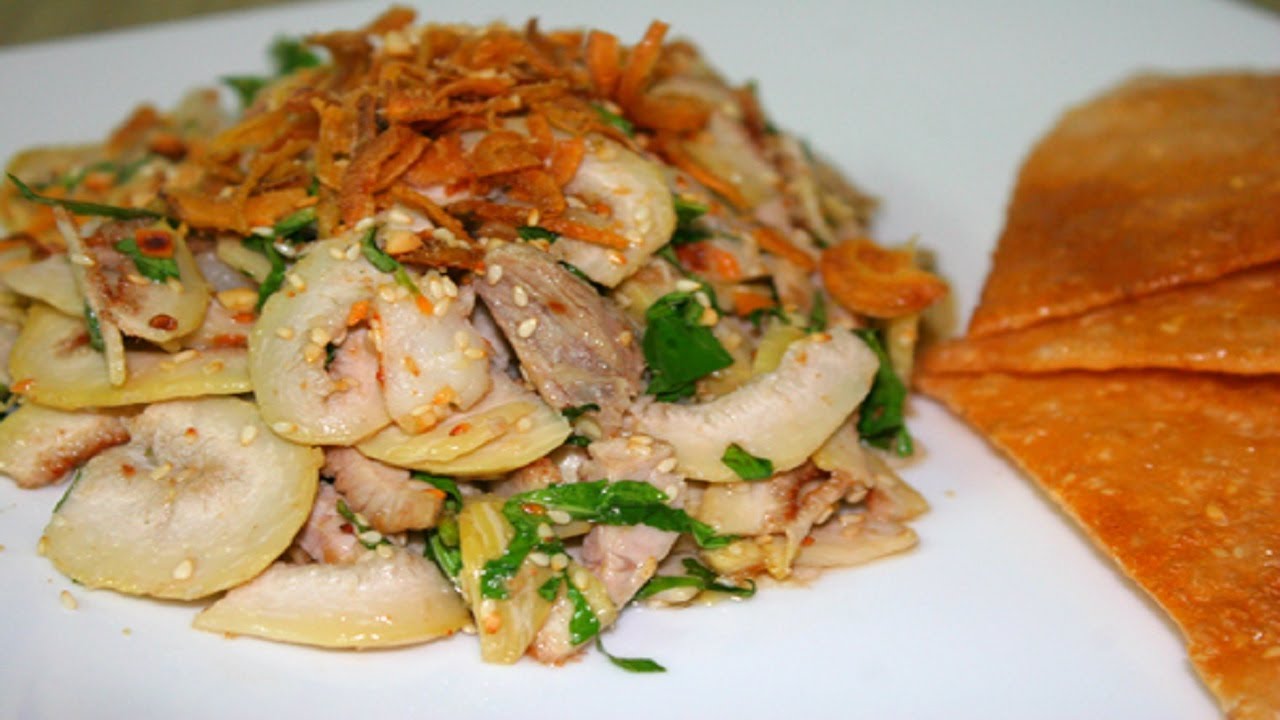
Va Tron
La Parfum (5 Le Loi Street) is committed to keeping the royal association with Va Tron alive by presenting it like it would have been presented to kings, with some elaborate displays befitting its gourmet price.
Praised around the country for the sociability of its eating, nem lui is a fantastic answer to the question of what to eat in Hue if you are dining in a group. Constructing the dish is half of the fun, as food is presented on platters that require some mild assembly before they are ready to eat. Take your nem (pork skewer), remove the stick, place it in your rice paper along with lettuce, coriander, cucumber, carrot, and papaya, dip it in peanut sauce, and prepare yourself for a taste sensation. Nem lui is one of the best examples of food that started life exclusively in the realms of royalty before it made it down to the most basic plastic tables on the pavement.
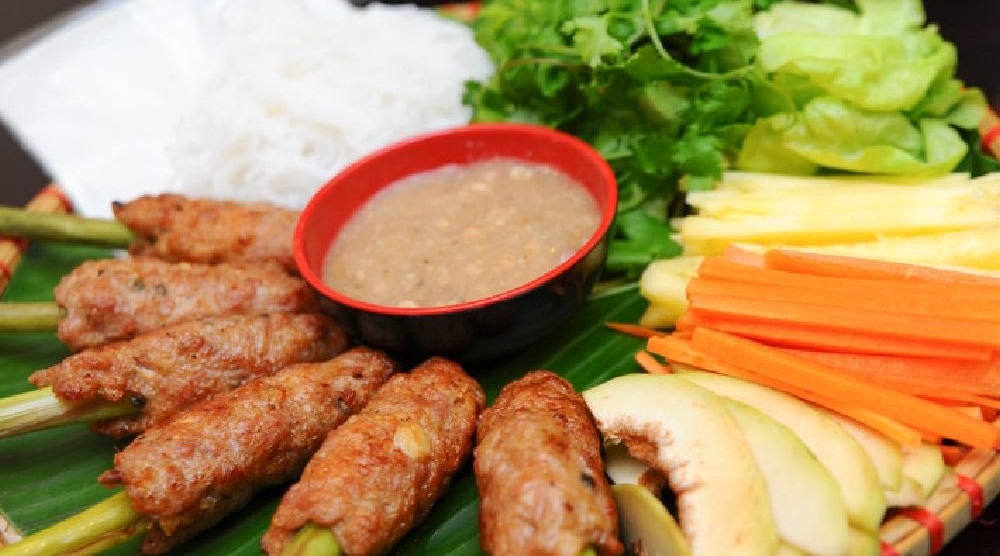
Nem Lui
Keep an eye out for small stands selling nem lui on the street, of which there are many, but a highly recommended place is Quan Hanh Hue (11-15 Pho Duc Chinh), where locals are the main patrons.
Taking the rather appealing appearance of tacos, Banh Khoai is a crispy folded pancake of mushroom, beansprouts, cucumber, onions, shrimp and beef, served with a peanut and garlic dipping sauce. This is one of the few foods in Hue to eat with your hands and is often served alongside nem lui and a beer for the full social effect.
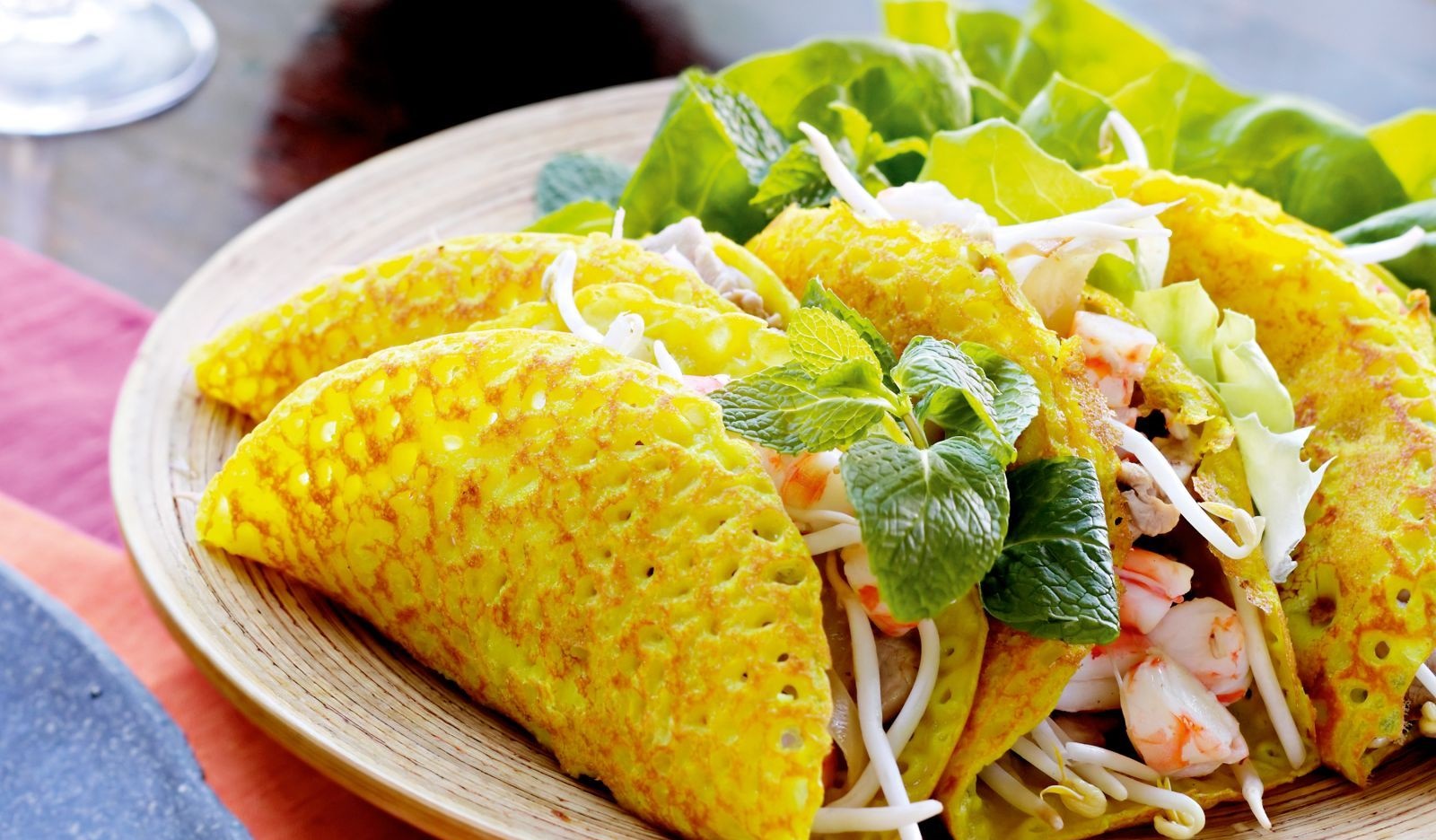
Banh Khoai
Banh Khoai can usually be found where nem lui is to be found, but it is the specialized food of choice at Banh Khoai Hong Mai (110 Dinh Tien Hoang).
Check our best tour to Hue to enjoy these delicious dishes: Central Vietnam Holiday 5 Days
This is one of the few foods to eat in Hue that originated in the last century as opposed to hundreds of years ago. Banh trang trung is essentially just the Vietnamese take on pizza, and as with most aspects of modern Western culture, it finds favor most with young Vietnamese people. In typical Asian style, this dish is heavy on crispy rice paper, with scrambled egg, pork pate, shallots, onions and chopped-up sausage sitting on top, covered in a tangy chili sauce. Certainly not the most royal dish to eat in Hue, but a hearty, social, and, most importantly, very tasty one.

Banh Trang Trung
This is street-level food at its most street-level. It’s unlikely you’ll find any Banh Trang Trung in the fancy restaurants around the city, but keep an eye out for ladies with steaming carts surrounded by youngsters on the street, in all likelihood, they probably sell Banh Trang Trung.
Dipping into the realms of seafood might have been a bit ambitious for the landlocked city of Hue, but Thuan An Beach 14 kilometres to the northwest of the city provided many of the clams and shrimp desired by the richest men in the kingdom. While this may have been a logistical problem in the feudal ages, nowadays the city is awash with beautiful seafood options for rich and poor alike. One of these is com hen, a pile of spicy rice with clams, peanuts, crispy fried noodles, and pig skin, all sitting waist-high in a clam broth and now one of the signature Hue foods & drinks.
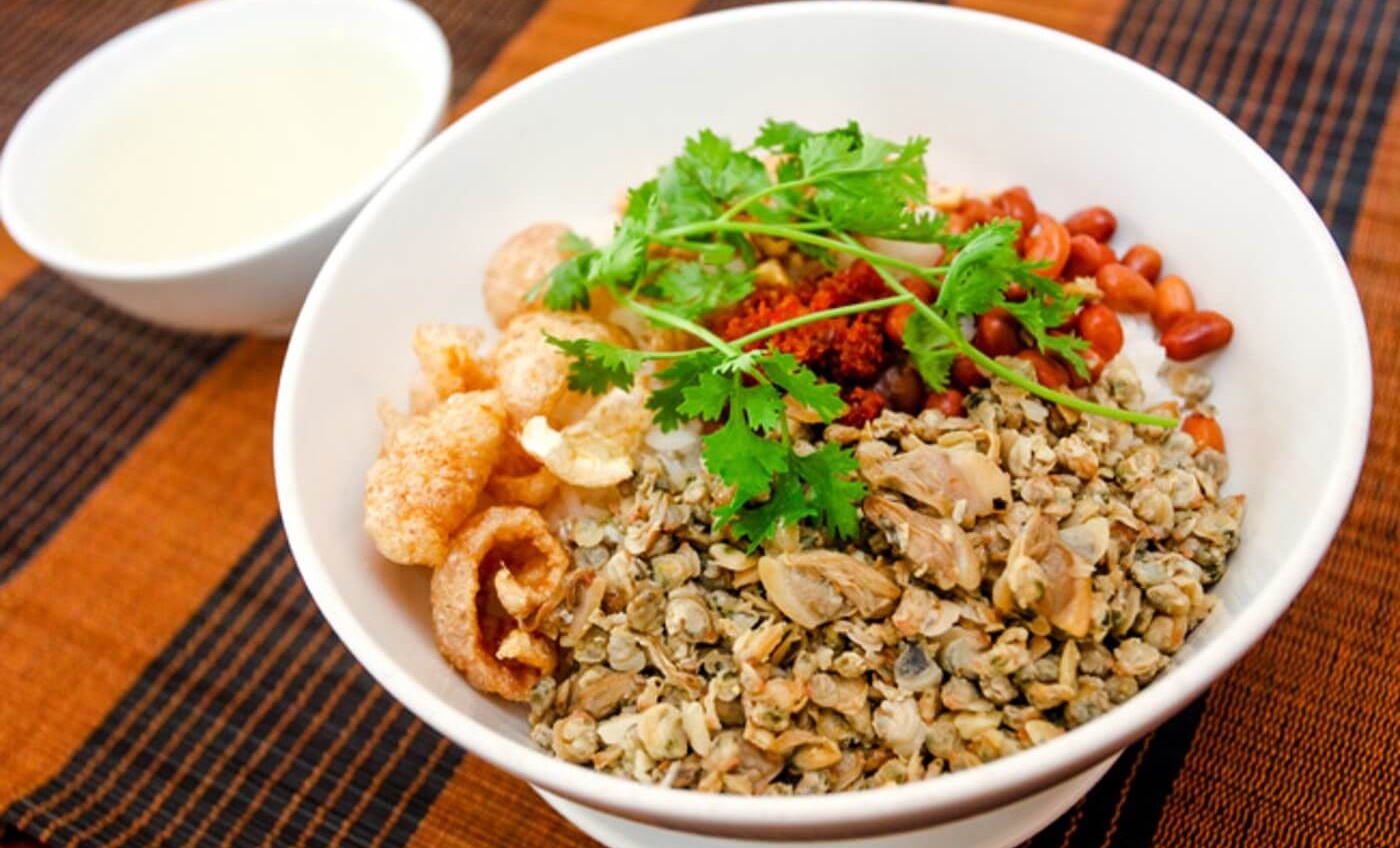
Com Hen Hue
You can find com hen spanning the gamut of restaurant menus, but you can’t beat the lovingly prepared (and cheap) street food variety. Head to Ba Hoa (7 Truong Dinh) for a place where locals pack plastic chairs, mostly feasting on this pride of Hue.
This countrywide phenomenon wouldn’t win any prizes for complexity, but it is actually the simplicity of the dish that makes it so charming. Translating to ‘noodles with grilled meat’, you probably won’t be surprised when exactly that is placed in front of you after ordering. Noodles sit in a bowl topped with peanuts, strands of vegetables like cucumber and carrot, and grilled pork meat, accompanied on the side with a bowl of fish sauce.

Bun Thit Nuong
As one of the most common things to eat in Hue, you will have no trouble finding this popular dish. Bun Thit Nuong (66 Bach Dang Street) is a local shop just outside of the tourist district, while Huyen Anh Restaurant (52/11 Kim Long Street) serves visitors to the nearby attraction of the Thien Mu Pagoda.
Che was traditionally the final offering to the kings of Hue, who wanted to leave their royal banquets on a sweet note. The concoction of coconut milk, mung beans, jelly, fruit, and tapioca that make up a bowl of Che quickly found an obliging audience outside the citadel, who developed varieties that were less regal and much more affordable. While the royalty was dining on Che Hat Sen (lotus seed che) and Che Mon Sap Vang (taro che), the working-class Vietnamese were developing Che Bap (corn che), Che Dau Ngu (red bean che) and Che Chuoi (banana che), nowadays comprising one of the most diverse foods to eat in Hue.
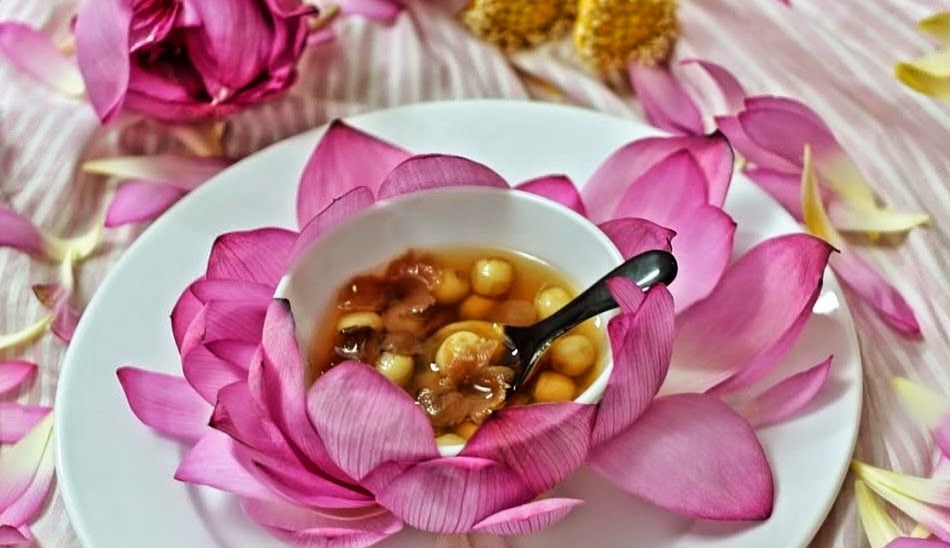
Che (Sweet Soup)
As with most sweet things, Che is usually for the young folk of Vietnam food, and you can see several teenagers and curious foreigners hanging out at Che Hem (1, Alley 29, Huong Vuong Street), one of the most popular spots in town because of the variety and flavor of Che here.
If you travel to Hue, Incredible Asia Journeys hopes that you can find your favorite dishes from this Hue food guide. Also, don't hesitate to share with us your experience during Hue trips!